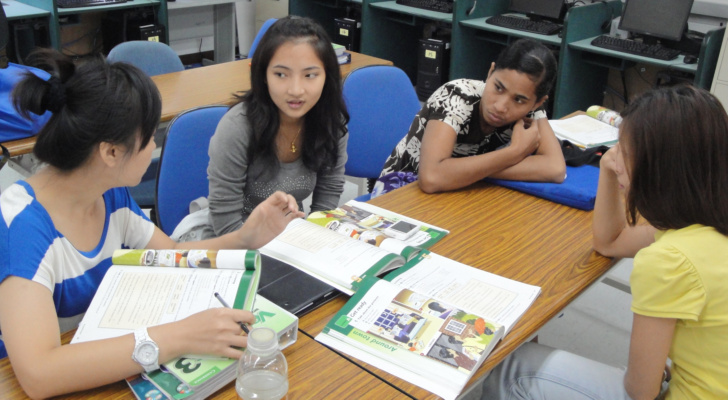M.A. TESOL
Candidate: LETICIA CRUZ
ED695
March 2015


RESEARCH
TOPIC

Effects of CALL on Oral Proficiency of ESL learners in the primary level of the Guam public schools


FOCUS OF STUDY

Introduction
- Technology in the classroom
- Definition of CALL
- Importance of oral Language
- Relation to Guam public schools
- Research Questions
- Significance of Study
- Key Terms


Technology in the Classroom
- Evolving in the education process
- Tool used to promote learning
- Includes various innovations
- Meeting the needs of learners


-
ESL LEARNERS
- Language acquisition
- Aid language learning
CALL
- Computer Assisted Language Learning
- Originated in the 1960s
- Has developed over the years
- Other terms TELL, CALI, MALL
- TOOL not a method
- Benefits 4 modalities of language
WHAT METHODS DO YOU KNOW?


ORAL LANGUAGE
- Speaking and Listening
- Necessary in socially and culturally participating in communication
- Promote social relationships
- Leads to confidence and positive attitudes


-
Increase in technology within the schools
- Grants and Remodeling
- ESL student population
- Meeting their needs
- Modern-day classroom
- general education
- ESL program/services
Relation to Guam Public Schools



RESEARCH QUESTIONS
- What is CALL
- How does CALL affect language learning?
- How is CALL integrated into instruction of oral language skills?
- What recommendations can be made to the use of CALL in order to improve oral proficiency?


SIGNIFICANCE OF STUDY
- Examines the use of CALL within a local public school.
- Examines the effects CALL has on ESL learners in relation to oral language proficiency.
- Results of the study will provide feedback in regards to effective use of CALL for our primary students identified as ESL.


DEFINITION OF TERMS
- CALL
- ELL
- ESL
- Oral language
- Language proficiency
- Student achievement




Methodology
-
Qualitative Approach
- Document studies
- ESL curriculum and standards
- Required documents of teacher
- Lesson plans, goals,
- In-depth interviews
- Teacher (10)
- Students (10)
- Administrator (1)
- ESL coordinator (1)
- Observations
- General education setting (6)
- ESL sheltered setting (1)
- Document studies


Methodology
The conduction of the study will be carried out at a later time. Permission and approval for distribution and collection of interviews and surveys is required prior to being conducted.
References
Brown Unversity. (n.d.). Oral Language: Considerations for ELLs. Retrieved from Teaching Diverse Learners: http://www.brown.edu/academics/education-alliance/teaching-diverse-learners/about/oral-language
Davies, G. (2006). Computer Assisted Language Education. Encyclopedia of Language and Linguistics (2nd Edition), 6, 460-470. Retrieved from http://hstrik.ruhosting.nl/wordpress/wp-content/uploads/2013/03/Davies2006.pdf
Department of Education and Skills. (2006). Unit 4: Speaking, Listening, Learning: Working with Childen Learning English as an Additional Language. In Excellence and Enjoyment: Learning and Teahing for Bilingual Children in the Primary Years. Primary National Strategy. Retrieved from http://www.naldic.org.uk/Resources/NALDIC/Teaching%20and%20Learning/pri_pubs_bichd_213506_021.pdf
Florez, M. C. (1999, June). Improving Adult English Language Learners' Speaking Skills. Retrieved from Center for Adult English Language Acquisition: http://www.cal.org/caela/esl_resources/digests/Speak.html
Genishi, C. (1998). Young Children's Oral Language Development. ERIC Digest, pp. 1-5. Retrieved from http://files.eric.ed.gov/fulltext/ED301361.pdf
Kayi, H. (2006). Teaching Speaking: Activities to Promote Speaking in a Second Language. The Internet TESL Journal, XII(11).
McCandlish, S. (2012). Taking a “Slice” of the Oral Language Pie:An Approach for Developing Oral Language in Schools. Retrieved from http://www.decd.sa.gov.au/northernadelaide/files/links/Taking_a_slice_of_Oral_Lan.pdf
Morales, N. E. (2014, May). Use of Computer Assisted Language Learning. Education and Human Development Master's Thesis. Retrieved from http://digitalcommons.brockport.edu/cgi/viewcontent.cgi?article=1398&context=ehd_theses
Nobar, A. G., & Ahangari, S. (2012). The Impact of Computer Assisted Language Learning on Iranian EFL Learners’ Task-Based Learning on Listening Skill and Motivation. Journal of Academic and Applied Studies, 2(1), 39-61. Retrieved from http://www.academians.org/Media/Default/Articles/January2012/jan2012.pdf
Phuong, L. L. (n.d.). Adopting CALL to Promote Listening Skills for EFL Learners in Vietnamese Universities. University of Aukland. Retrieved from http://conference.pixel-online.net/ICT4LL2011/common/download/Paper_pdf/IBL26-175-FP-Phuong-ICT4LL2011.pdf
Ross, J. (2006). ESL Listening Comprehension: Practical Guidelines for Teachers. The Internet TESLJournal. Retrieved from http://iteslj.org/Techniques/Ross-ListeningComprehension.html
Shepherd, A. (2008, May 8). Speaking and Listening. TES Connect. Retrieved from https://www.tes.co.uk/article.aspx?storycode=2113584
Warschauer, M. (1996). Computer-Assisted Language Learning: An Introduction. Multimedia Language Teaching, 3-20. Retrieved from http://fis.ucalgary.ca/Brian/BibWarschauer.html
Yang, Y. (2010). Computer-Assisted Foreing Language Teaching: Theory and Practice. Journal of Language Teaching and Research, 909-912. Retrieved from http://ojs.academypublisher.com/index.php/jltr/article/viewFile/0106909912/2293

Chapter 1-3
By Leticia Cruz
Chapter 1-3
- 719


